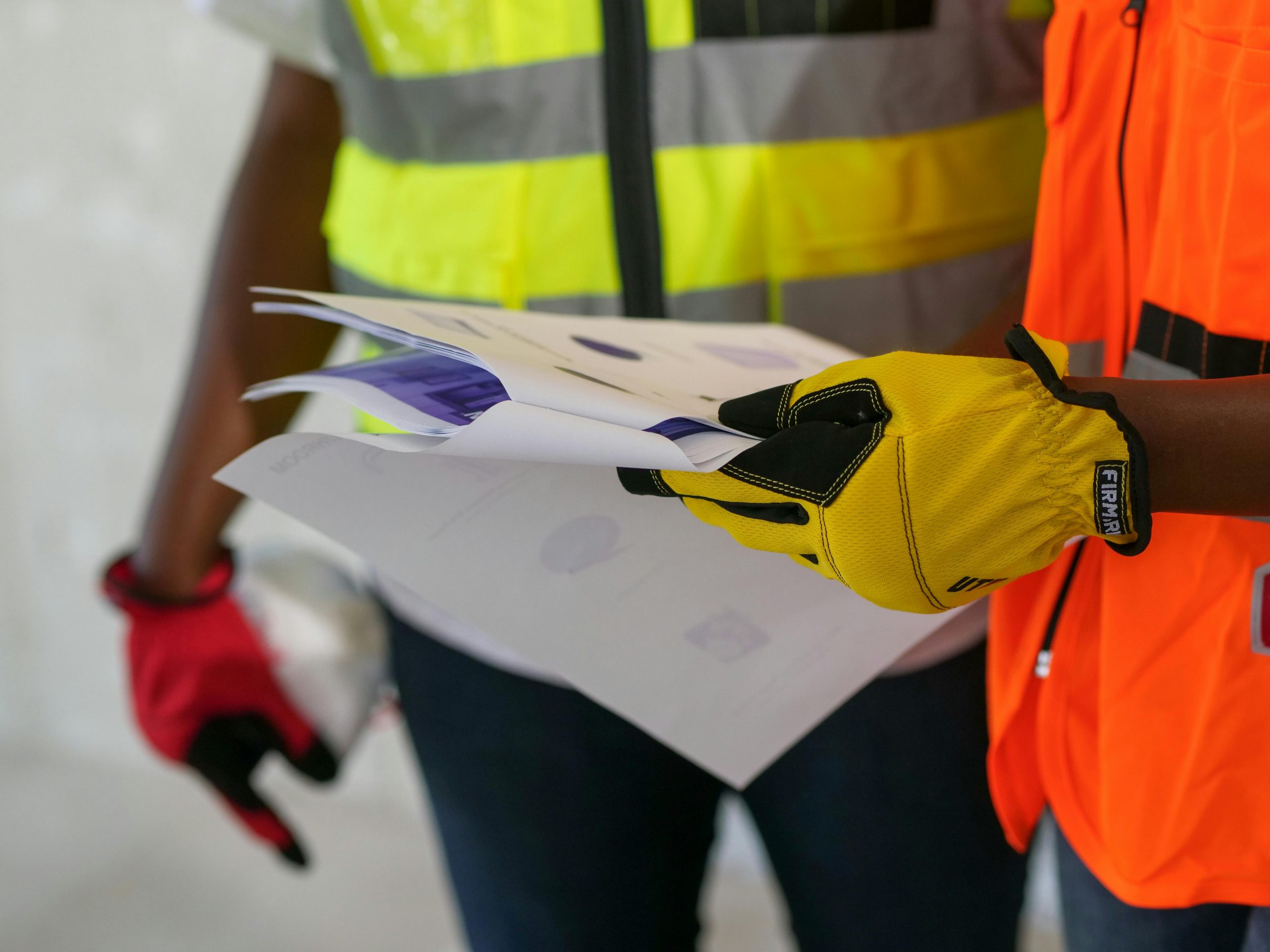In today’s fast-paced work environment, ensuring a safe workplace isn’t just about following regulations—it’s about fostering a mindset where safety is ingrained in every team member’s daily actions. Companies that actively improve safety culture see not only a reduction in accidents and incidents but also an increase in employee engagement, trust, and productivity. But transforming safety culture requires more than just policies—it requires a commitment to cultivating positive behaviors and proactive leadership.
This article explores actionable strategies to improve safety culture, helping teams embrace safety as a shared value and driving sustainable change across organizations.
What Is Safety Culture?
Safety culture refers to the collective attitudes, beliefs, and behaviors that employees share regarding safety within the workplace. It goes beyond compliance and technical measures—it’s about creating an environment where safety is a core value, consistently prioritized in decisions and actions.
Organizations with a strong safety culture enjoy numerous benefits:
- Reduced workplace incidents and injuries
- Higher employee morale and engagement
- Greater operational efficiency
- Enhanced organizational reputation
By understanding and actively improving safety culture, teams can move from reactive safety practices to proactive, preventative approaches.
Why Improving Safety Culture Matters
Safety incidents are often not caused by a lack of procedures but by poor safety culture. Workers may ignore protocols due to perceived inefficiency, lack of training, or weak leadership emphasis. To truly improve safety culture, organizations must address the root causes and create an environment where safety becomes second nature.
Actively working to improve safety culture helps teams adopt safer behaviors, promotes accountability, and ensures that safety is seen as a shared responsibility rather than a box to check. Organizations that prioritize efforts to improve safety culture experience fewer accidents, higher morale, and a stronger sense of trust among employees.
Key reasons to focus on improving safety culture include:
- Protecting People: A strong safety culture ensures employees return home safely every day.
- Reducing Costs: Fewer incidents mean lower insurance premiums, legal fees, and operational downtime.
- Boosting Productivity: Employees feel valued and motivated in a safe, supportive environment.
- Compliance Confidence: A proactive safety culture naturally aligns with regulations and standards.
By committing to strategies that improve safety culture, companies create a lasting, positive impact on both employees and overall organizational performance. Ultimately, the goal is to continuously improve safety culture so that safe practices become an instinctive part of everyday work life.
Steps to Improve Safety Culture
Creating a strong safety culture requires systematic and ongoing effort. Below are strategies that leaders and teams can implement to drive lasting change.
1. Lead by Example
Leadership sets the tone for organizational culture. When leaders visibly prioritize safety, employees are more likely to follow suit. Actions include:
- Following all safety protocols consistently
- Actively participating in safety training
- Recognizing and rewarding safe behaviors
2. Encourage Open Communication
Transparency is crucial in improving safety culture. Employees should feel comfortable reporting hazards, near-misses, or unsafe practices without fear of retaliation. Strategies include:
- Implementing anonymous reporting systems
- Holding regular safety meetings
- Encouraging feedback and discussion
3. Provide Continuous Training
Training is not a one-time event. Regular, interactive sessions ensure employees understand procedures, recognize hazards, and know how to respond. Effective training strategies include:
- Hands-on safety drills
- E-learning modules and quizzes
- Tailored sessions based on departmental needs
4. Foster Team Accountability
Safety is everyone’s responsibility. Encourage teams to hold each other accountable by:
- Assigning safety champions in each team
- Establishing peer-to-peer safety observations
- Tracking team-based safety performance metrics
5. Recognize and Reward Safe Behaviors
Positive reinforcement encourages employees to maintain safe practices. Recognition can include:
- Employee-of-the-month safety awards
- Team celebrations for accident-free milestones
- Small incentives for reporting hazards
6. Integrate Safety Into Daily Operations
Safety should never be an afterthought. Embed it into workflows, planning, and decision-making processes:
- Include safety checks in project planning
- Review safety considerations during daily briefings
- Ensure safety equipment is accessible and maintained
7. Measure and Monitor Progress
You can’t improve what you don’t measure. Track safety performance using metrics such as:
- Incident rates and near-miss reports
- Employee safety engagement scores
- Audit results and compliance levels
Overcoming Challenges in Safety Culture Transformation
Improving safety culture isn’t without obstacles. Common challenges include resistance to change, lack of leadership commitment, and limited resources. Overcoming these barriers requires:
- Persistent leadership support
- Clear communication of goals and benefits
- Incremental changes with visible results to build momentum
Role of Leadership in Driving Safety Culture
Leadership is the cornerstone of safety culture. Effective leaders:
- Communicate safety expectations clearly and consistently
- Model safe behaviors and accountability
- Encourage participation and listen to concerns
- Invest in resources that support safety initiatives
When leadership demonstrates genuine commitment, teams are more likely to embrace a culture of safety enthusiastically.
Creating a Positive Safety Environment
A positive safety environment nurtures trust and empowerment. Key elements include:
- Mutual respect among team members
- Open dialogue about risks and solutions
- Encouragement of proactive safety behaviors
- Integration of safety into team goals and recognition systems
By making safety a shared value rather than a mere obligation, teams become naturally inclined to act safely.
Benefits of a Strong Safety Culture
Organizations that successfully improve safety culture enjoy:
- Lower accident and injury rates
- Enhanced employee engagement and retention
- Stronger team collaboration
- Improved compliance with regulatory standards
- Reduced operational and financial risk
The benefits extend beyond safety metrics, positively influencing overall organizational performance and reputation.
Actionable Tips to Sustain Safety Culture
- Regularly Review Policies: Ensure safety policies remain relevant and effective.
- Promote Continuous Learning: Encourage employees to learn from incidents and near-misses.
- Celebrate Wins: Recognize milestones to maintain motivation.
- Solicit Feedback: Engage teams in improving procedures and protocols.
- Invest in Technology: Use safety management software for monitoring and reporting.
Sustaining a safety culture is an ongoing effort that requires attention, dedication, and adaptability.
Frequently Asked Questions About Improving Safety Culture
1. How Can Organizations Effectively Improve Safety Culture?
Organizations can improve safety culture by fostering leadership commitment, promoting open communication, providing continuous training, and embedding safety into daily operations. Recognizing safe behaviors and tracking safety performance also strengthens the culture.
2. How Long Does It Take to See Results in Safety Culture?
Improving safety culture is an ongoing process. While some improvements can be seen within months, achieving a fully ingrained safety mindset may take years. Consistency in leadership actions and employee engagement accelerates positive outcomes.
3. What Are the Benefits of a Strong Safety Culture?
A strong safety culture reduces workplace accidents, enhances employee engagement, boosts productivity, ensures regulatory compliance, and improves overall organizational reputation. Teams also experience higher morale and collaboration.
Conclusion: Ignite Positive Change Today
To truly improve safety culture, organizations must move beyond compliance and instill safety as a shared value. By leading with example, encouraging open communication, providing ongoing training, and recognizing safe behaviors, teams can ignite positive change that lasts.
A strong safety culture protects people, reduces risks, and fosters a productive, engaged workforce. Start today—empower your teams, embrace proactive safety practices, and transform your workplace into a safer, more resilient environment. Navigate easily through our content by starting from the main page.











Leave a Reply